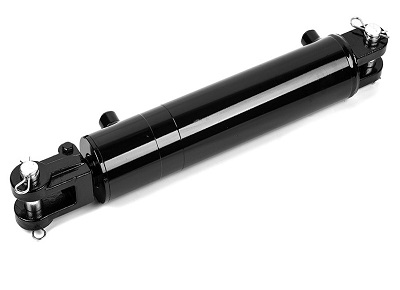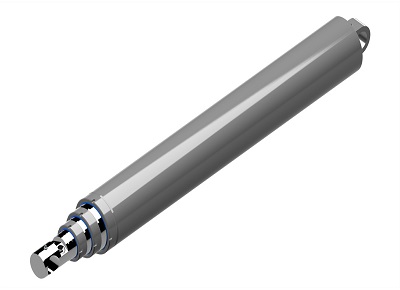The hydraulic cylinder, an essential component in many hydraulic systems, efficiently converts hydraulic energy into mechanical energy. Its motion is typically simple, consisting of linear reciprocation or oscillation, yet its structure is quite intricate and its performance highly reliable. During reciprocating motion, the China hydraulic cylinder does not require a speed reduction mechanism, and there is no transmission backlash, ensuring smooth movement. This makes it widely used in hydraulic systems across various machinery. The output force of the China hydraulic cylinder is closely related to the effective area of the piston and the pressure difference at both ends, ensuring system efficiency and stability.
The internal structure of the hydraulic cylinder is finely designed and complex, comprising key components such as the cylinder barrel, piston, piston rod, and sealing elements. The cylinder barrel is the main part of the hydraulic cylinder, and its inner wall undergoes special treatment to ensure good wear resistance and sealing performance. The piston moves reciprocally within the cylinder barrel, and its effective area directly impacts the output force of the China hydraulic cylinder. The piston rod converts the reciprocating motion of the piston into linear motion, while also transmitting force. The sealing elements ensure that the China hydraulic cylinder maintains excellent sealing performance under high-pressure conditions, preventing hydraulic oil leakage. A hydraulic cylinder components diagram visually maps these parts, offering clarity on their interactions and spatial relationships.
The cylinder body assembly, together with the piston assembly, forms a sealed chamber that must withstand the oil pressure. Therefore, the cylinder body assembly must possess sufficient strength, high surface precision, and reliable sealing properties to ensure the normal operation of the China hydraulic cylinder.
As an actuator in hydraulic systems, the basic operating principle of the China hydraulic cylinder is to drive the piston or plunger to perform linear reciprocating motion through hydraulic pressure, thereby completing various mechanical actions and energy conversions.
The working principle of the China hydraulic cylinder is based on Pascal's Law, which states that the pressure in a confined fluid is equal in all directions. When external force is applied to the piston of the China hydraulic cylinder, the fluid pressure acts on the opposite side of the piston, driving the piston to move. By changing the flow direction and pressure of the fluid, the stroke and thrust direction of the China hydraulic cylinder can be controlled, enabling various operational modes.
The principle of hydraulic transmission involves using hydraulic fluid as the working medium. The movement is transmitted by changing the sealed volume, while the fluid pressure inside transmits power. In this system, the power section primarily converts the mechanical energy of the prime mover into hydraulic energy (pressure energy), typically through a hydraulic pump. The actuator section then converts the pressure energy input by the hydraulic pump into mechanical energy to drive the working mechanism, such as a China hydraulic cylinder or hydraulic motor. The control section is responsible for controlling and adjusting the pressure, flow, and direction of the fluid, which is accomplished via pressure control valves, flow control valves, and directional control valves. The auxiliary section connects the aforementioned components into a complete system, including pipes, fittings, oil tanks, filters, accumulators, seals, and control instruments.
In a China hydraulic cylinder, the pressure applied at any point is transmitted equally in all directions. This means that when China hydraulic cylinder is used, each will move at its own speed, depending on the pressure required to move the load. Additionally, to ensure synchronized motion of the China hydraulic cylinder, so that the load is raised at the same speed at every point, control valves or synchronization lifting system components need to be used in the system.


